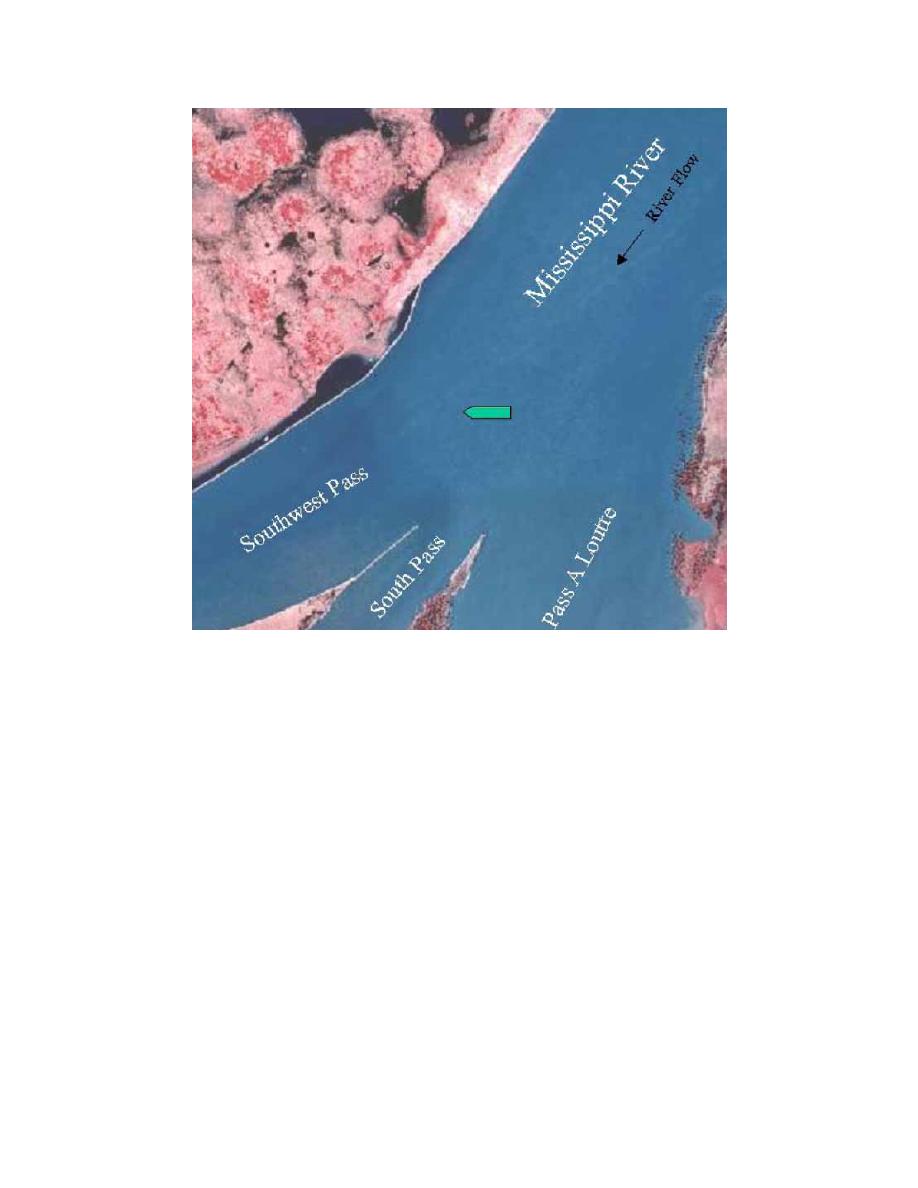 |
||
|
|
||
|
Page Title:
Figure 4. Downstream-bound vessel "crabbing" around HOP |
||
| |||||||||||||||
|
|
 Figure 4.
Downstream-bound vessel "crabbing" around HOP
and an 1,800-hp ladder pump). Dredge (hull) pump discharge diameters are 30
in. The Beachbuilder was designed to conduct beach nourishment projects where
long-distance pumping is required. During the demonstration, the ladder pump
and only one of the two hull pumps were required to pump slurry to the place-
ment site.
The Beachbuilder normally operates using wire rope to advance into a cut.
The dredge is equipped with six winches (three forward and three aft) that pull
against 11,000-lb Stephris anchors to effect movement (see Photo 6). Due to the
strong current and requirement for rapid movement, a tug was connected to the
stern to help maneuver the dredge (see Photo 7). During the project, it was deter-
mined that with the aid of the tug, the dredge could be advanced using only two
forward winches. Also during the project, a second tug was connected to the
starboard side of the dredge to aid in maneuvering the dredge into and out of the
channel (see Photo 8). A typical dustpan dredge is self-propelled and primarily
advances into the bank using two forward anchor wires. Stern or bow thrusters
are used to help maintain station.
The Beachbuilder is equipped with a large engine room housing the pump
engines and electrical generator, an equipment control room, a small galley, two
10
Chapter 2
Project Description
|
|
Privacy Statement - Press Release - Copyright Information. - Contact Us - Support Integrated Publishing |